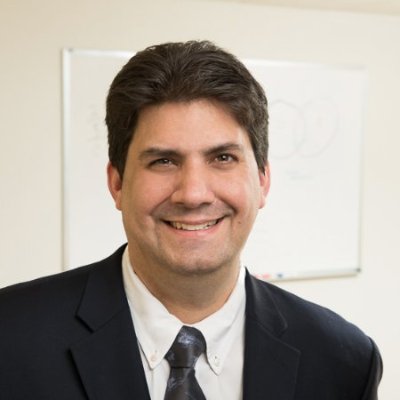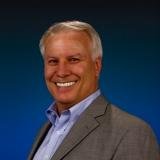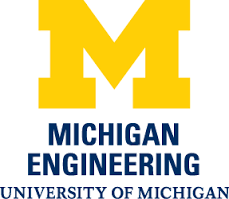News Clips
$3.6 Million to Fund Personalized 3-D Brain Maps to Guide Neurosurgeries
 Neurosurgeons must avoid cutting into parts of the brain responsible for key functions such as language (orange) and vision (green), but individuals vary in where such functions are located (each of the top images compared with the bottom images above). Researchers are creating a software program that uses data from MRI scans to create personalized anatomic and functional brain maps and integrate them into a navigational system to guide physicians during neurosurgery. Removing a brain tumor requires walking a fine line: Remove too little, and the disease remains; remove too much, and sight, speech or movement may be impaired...
Neurosurgeons must avoid cutting into parts of the brain responsible for key functions such as language (orange) and vision (green), but individuals vary in where such functions are located (each of the top images compared with the bottom images above). Researchers are creating a software program that uses data from MRI scans to create personalized anatomic and functional brain maps and integrate them into a navigational system to guide physicians during neurosurgery. Removing a brain tumor requires walking a fine line: Remove too little, and the disease remains; remove too much, and sight, speech or movement may be impaired...
- Login to post comments
Graphene Sieve Turns Seawater into Drinking Water
 Graphene-oxide membranes have attracted considerable attention as promising candidates for new filtration technologies. Now the much sought-after development of making membranes capable of sieving common salts has been achieved. New research demonstrates the real-world potential of providing clean drinking water for millions of people who struggle to access adequate clean water sources...
Graphene-oxide membranes have attracted considerable attention as promising candidates for new filtration technologies. Now the much sought-after development of making membranes capable of sieving common salts has been achieved. New research demonstrates the real-world potential of providing clean drinking water for millions of people who struggle to access adequate clean water sources...
- Login to post comments
The Blockchain Interview with Jason Goldwater
 There are three, initially, that it has the potential to solve. First is access to data. The way that systems have been set up in hospitals or large integrated physician networks is that the data will either reside in a centralized server or now the trend is to reside it in a cloud. That’s fine and that certainly has been effective, but you’re talking about a large consolidation of data in a centralized location. Blockchain is very different because it is what is known as distributed ledger technology...
There are three, initially, that it has the potential to solve. First is access to data. The way that systems have been set up in hospitals or large integrated physician networks is that the data will either reside in a centralized server or now the trend is to reside it in a cloud. That’s fine and that certainly has been effective, but you’re talking about a large consolidation of data in a centralized location. Blockchain is very different because it is what is known as distributed ledger technology...
- Login to post comments
Maintaining Health Data Privacy in Precision Medicine Push
As cybersecurity threats continue to evolve and put PHI at risk, precision medicine guidelines need to be updated to account for new health data privacy threats, according to a recent opinion piece published in the Oxford University Press. The Johns Hopkins Hospital and Health System Senior Counsel Jennifer Kulynych, JD, PhD explained that data re-identification methods are not foolproof, and it can be difficult to determine exactly how individuals’ genomes are being used...
- Login to post comments
University System of Maryland Awards Mini-Grants to Increase the Use of Open Educational Resources
 The University System of Maryland’s (USM) William E. Kirwan Center for Academic Innovation announced 21 grantees who will receive support to adopt, adapt and scale the use of open educational resources (OER) through the Maryland Open Source Textbook (MOST) initiative High-impact OER Mini-Grant Program. The grants will be provided to faculty who are adopting, adapting or scaling the use of OER in Fall 2017 through high-enrollment courses where quality OER exists.
The University System of Maryland’s (USM) William E. Kirwan Center for Academic Innovation announced 21 grantees who will receive support to adopt, adapt and scale the use of open educational resources (OER) through the Maryland Open Source Textbook (MOST) initiative High-impact OER Mini-Grant Program. The grants will be provided to faculty who are adopting, adapting or scaling the use of OER in Fall 2017 through high-enrollment courses where quality OER exists.
- Login to post comments
Bill to Make Federal Data Open, Machine-Readable Reintroduced in Both Chambers
A bipartisan and bicameral group of lawmakers reintroduced Wednesday the OPEN Government Data Act — a bill that passed the Senate last year but stalled in the House. The bill, which would set a presumption that federal data should be published online in a machine-readable format, has a broad support from open data advocates, government spending watchdogs and the technology industry...
- Login to post comments
How the Right Data Analytics Diminish Administrative Burden on Clinicians
Data flooding the healthcare industry has the potential to completely revolutionize patient care and drive improved health outcomes. Yet when left inadequately structured or under-automated, the deluge of data is one contributing factor to administrative burden — a pervasive issue affecting clinicians across most specialties. Eighty percent of physicians today are professionally overextended or at capacity, leaving them with no time to see additional patients, according to the 2016 Physicians Foundation survey...
- Login to post comments
Machine Learning 101: The Healthcare Opportunities Are Endless
To understand how machine learning can aid healthcare organizations, healthcare executives first must have a basic grasp of what machine learning is and what it can do. “Machine learning is about discovering new knowledge,” said Zeeshan Syed, director of the clinical inference and algorithms program at Stanford Health Care and clinical associate professor, anesthesiology, perioperative and pain medicine, at the Stanford University School of Medicine. “At a high level, artificial intelligence is getting an agent, software, to behave like it’s smart..."
- Login to post comments
Why Hospital Data Centers Are Moving to the Cloud
 As hospital data center infrastructures age and resources shrink, IT leaders are increasingly looking to the cloud to meet their storage needs. Not only is it cheaper than investing in upgrades and replacements of existing hardware and software, but it can add a level of security, especially in disaster-prone areas. The trend has some wondering if hospitals will still have physical data centers in the future or whether they will go the way of the dinosaurs.
As hospital data center infrastructures age and resources shrink, IT leaders are increasingly looking to the cloud to meet their storage needs. Not only is it cheaper than investing in upgrades and replacements of existing hardware and software, but it can add a level of security, especially in disaster-prone areas. The trend has some wondering if hospitals will still have physical data centers in the future or whether they will go the way of the dinosaurs.
- Login to post comments
Travis Oliphant to Discuss the Power of the Python Ecosystem and Open Data Science at TDWI Accelerate Boston
 Continuum Analytics, the creator and driving force behind Anaconda, the leading Open Data Science platform powered by Python, today announced that Travis Oliphant, chief data scientist and co-founder, will be speaking at TDWI Accelerate Boston on April 4 at 1:30 p.m. EDT. As one of the leading conferences on Big Data and data science, Accelerate brings together the brightest and best data minds in the industry to discuss the future of data science and analytics...
Continuum Analytics, the creator and driving force behind Anaconda, the leading Open Data Science platform powered by Python, today announced that Travis Oliphant, chief data scientist and co-founder, will be speaking at TDWI Accelerate Boston on April 4 at 1:30 p.m. EDT. As one of the leading conferences on Big Data and data science, Accelerate brings together the brightest and best data minds in the industry to discuss the future of data science and analytics...
- Login to post comments
popHealth Community and OSEHRA Release Major Update to Open Source Clinical Quality Measure Database and Reporting Engine
 This is the second major release since popHealth version 3.0 was transitioned to the OSEHRA popHealth Community in 2014. It is the culmination of collaborative efforts by members of the OSEHRA popHealth Steering Work Group and the Developer Open Source Project Group. OSEHRA Organizational Member Zato Health co-funded the ONC certification and provided key technical support throughout the process, coordinating closely with the Connecticut Department of Social Services/ Medicaid. Group members from Northwestern University, eHealthConnecticut, Alabama State Medicaid, and Qualifacts all made significant code, expertise, and infrastructure contributions...
This is the second major release since popHealth version 3.0 was transitioned to the OSEHRA popHealth Community in 2014. It is the culmination of collaborative efforts by members of the OSEHRA popHealth Steering Work Group and the Developer Open Source Project Group. OSEHRA Organizational Member Zato Health co-funded the ONC certification and provided key technical support throughout the process, coordinating closely with the Connecticut Department of Social Services/ Medicaid. Group members from Northwestern University, eHealthConnecticut, Alabama State Medicaid, and Qualifacts all made significant code, expertise, and infrastructure contributions...
- Login to post comments
The Next Generation of EHRs Will Be Fundamentally Different
Electronic Health Records (EHRs) have come a long way. Over 80 percent of physicians use them in their offices, and nearly all hospitals have implemented EHRs as well. Spurred by the HITECH portion of the 2009 Recovery act, Meaningful Use has put money on the table for physicians and hospitals to adopt and use EHRs. It also defined what kinds of features an EHR must have in order to be Certified. Legacy systems took on these new requirements by adding to their offerings (sometimes referred to as “bolt-on solutions”)...
- Login to post comments
Open-Source Software Unlocks 3-D View of Nanomaterials
 Now it’s possible for anyone to see and share 3-D nanoscale imagery with Tomviz 1.0, a new open-source software platform released today. Designed by a team that includes scientists at the University of Michigan, Cornell University and open-source software company Kitware Inc., Tomviz is the first open-source tool that enables researchers to easily create 3-D images from electron tomography data, then share and manipulate those images in a single platform...
Now it’s possible for anyone to see and share 3-D nanoscale imagery with Tomviz 1.0, a new open-source software platform released today. Designed by a team that includes scientists at the University of Michigan, Cornell University and open-source software company Kitware Inc., Tomviz is the first open-source tool that enables researchers to easily create 3-D images from electron tomography data, then share and manipulate those images in a single platform...
- Login to post comments
Five Ways Consortia Can Catalyse Open Science
“I am going to my grave with my disk drive in my cold dead hands.” So a senior scientist told a junior researcher, who related the tale at a 2013 US National Science Foundation (NSF) workshop on the reuse of physical samples in the geosciences. Sharing — of data sets, metadata, models, software and other resources — promises to speed discoveries, improve reproducibility and expand economic development. But it requires people to change. Overcoming personal reluctance is doubly difficult because many aspects of the scientific enterprise undermine sharing. Right now, most departments, funders and journals presume that data are proprietary from collection to publication..
- Login to post comments
European Commission Considering Leap into Open-Access Publishing
One of Europe’s biggest science spenders could soon branch out into publishing. The European Commission, which spends more than €10 billion annually on research, may follow two other big league funders, the Wellcome Trust and the Bill & Melinda Gates Foundation, and set up a “publishing platform” for the scientists it funds, in an attempt to accelerate the transition to open-access publishing in Europe...
- Login to post comments